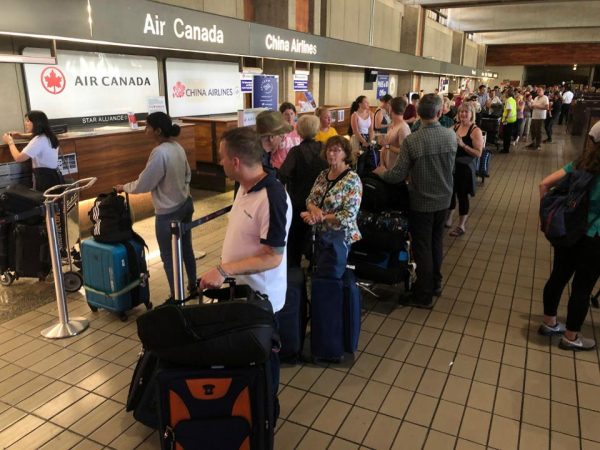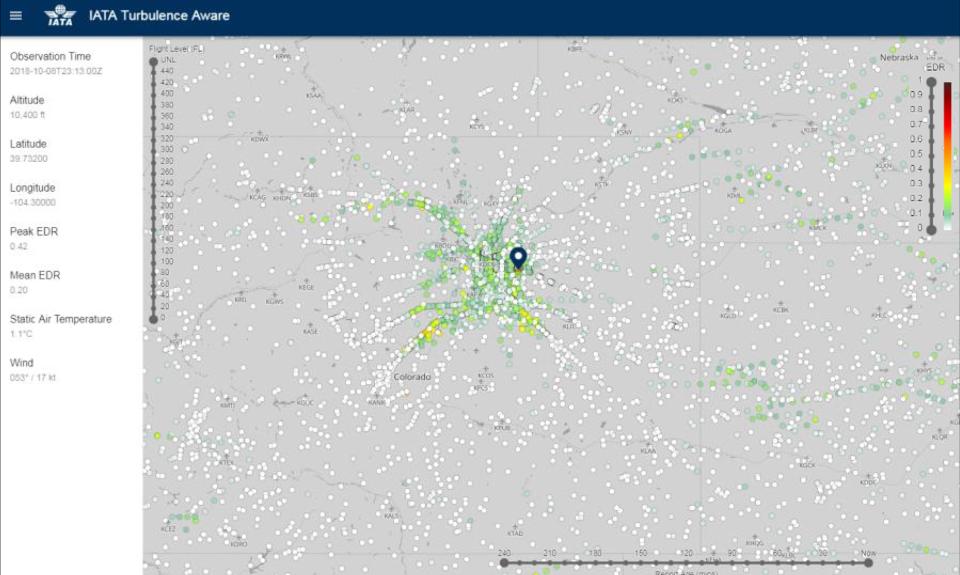As Technology Advances, The Best Defense Against Clear Air Turbulence Injuries Is Still Analogue – Forbes
The Clear Air Turbulence (CAT) injuries suffered by dozens of passengers onboard Air Canada flight to Australia, is a reminder that this category of turbulence continues to pose a threat to aviation safety. Studies show that climate change will make these incidents more common and potentially more dangerous. While technology is advancing to make this invisible turbulence easier to detect, the best defense is still to wear your seatbelt at all times, no matter what the seatbelt light says.

Passengers from an Australia-bound Air Canada flight diverted to Honolulu Thursday, July 11, 2019, after about 35 people were injured during turbulence, stand in line at the Air Canada counter at Daniel K. Inouye International Airport to rebook
ASSOCIATED PRESS
While airlines and pilots plan their flight paths to avoid weather systems that could cause a risk to passengers, CAT is difficult for pilots to avoid because it is invisible. That is why passengers and crew on the Air Canada flight had no forewarning. CAT is also more likely at high altitude, during the cruising phase of flight. This is the time when, normally, the seatbelt light goes off and passengers are free to move around the cabin. It’s also when cabin crew are carrying out meal service. All these factors make it more likely that passengers and crew will be seriously injured.
Unfortunately, climate change could make these incidents more common. A 2017 study conducted by Dr. Paul Williams, Professor of Atmospheric Science at the University of Reading, predicts that invisible turbulence at 39,000 feet could become much more common by 2050-2080. Turbulence incidents could increase on North Atlantic routes by as much as 180%, over North America by 110%, and over Asia by 60%. But don’t let the far-off dates fool you, air turbulence is increasing now.
“Air turbulence is increasing across the globe, in all seasons, and at multiple cruising altitudes,” Williams said. “This problem is only going to worsen as the climate continues to change. Our study highlights the need to develop improved turbulence forecasts, which could reduce the risk of injuries to passengers and lower the cost of turbulence to airlines.”
Airlines are well aware of the risks to passenger and crew, as well as the costs resulting from damage to aircraft and flight diversions, and they are working on the better forecasts that Williams recommended.
Last year, the International Air Transport Association (IATA) announced the launch of a new crowd-source technology solution to help airlines lessen the risks of encountering turbulence. The new Turbulence Aware Platform will gather data from participating airlines to paint a risk map that pilots and dispatchers can use to see turbulence that might otherwise be invisible. The system will also rely on aircraft sensor data for consistent measurements of the intensity of turbulence.

IATA Turbulence Aware Viewer. Color-coded turbulence reports are presented on a map. White dots represent areas of no turbulence and colored dots represent the intensity of turbulence as per the scale on the right.
International Air Transport Association (IATA)
Turbulence Aware will need many airlines contributing data to work best but IATA already has some of the world’s leading airlines taking part, including American Airlines, Delta, Southwest and United. Delta Air Lines also has its own advanced turbulence predicting technology—the Flight Weather Viewer app installed on pilots’ electronic flight bag tables.
But the best protection against clear air turbulence is already installed on every plane. While turbulence might make you feel like you’re on a roller-coaster, your seat belt was designed to keep you safe in a crash.
Aircraft seats and seat belts are tested to withstand 16Gs of force—that’s sixteen times the force of gravity. According to the NTSB, even extreme turbulence will generate less than or up to 2Gs of vertical acceleration. The best turbulence safety strategy is to keep your seatbelt fastened whenever you’re seated and to stay seated as long as you can when you fly.






